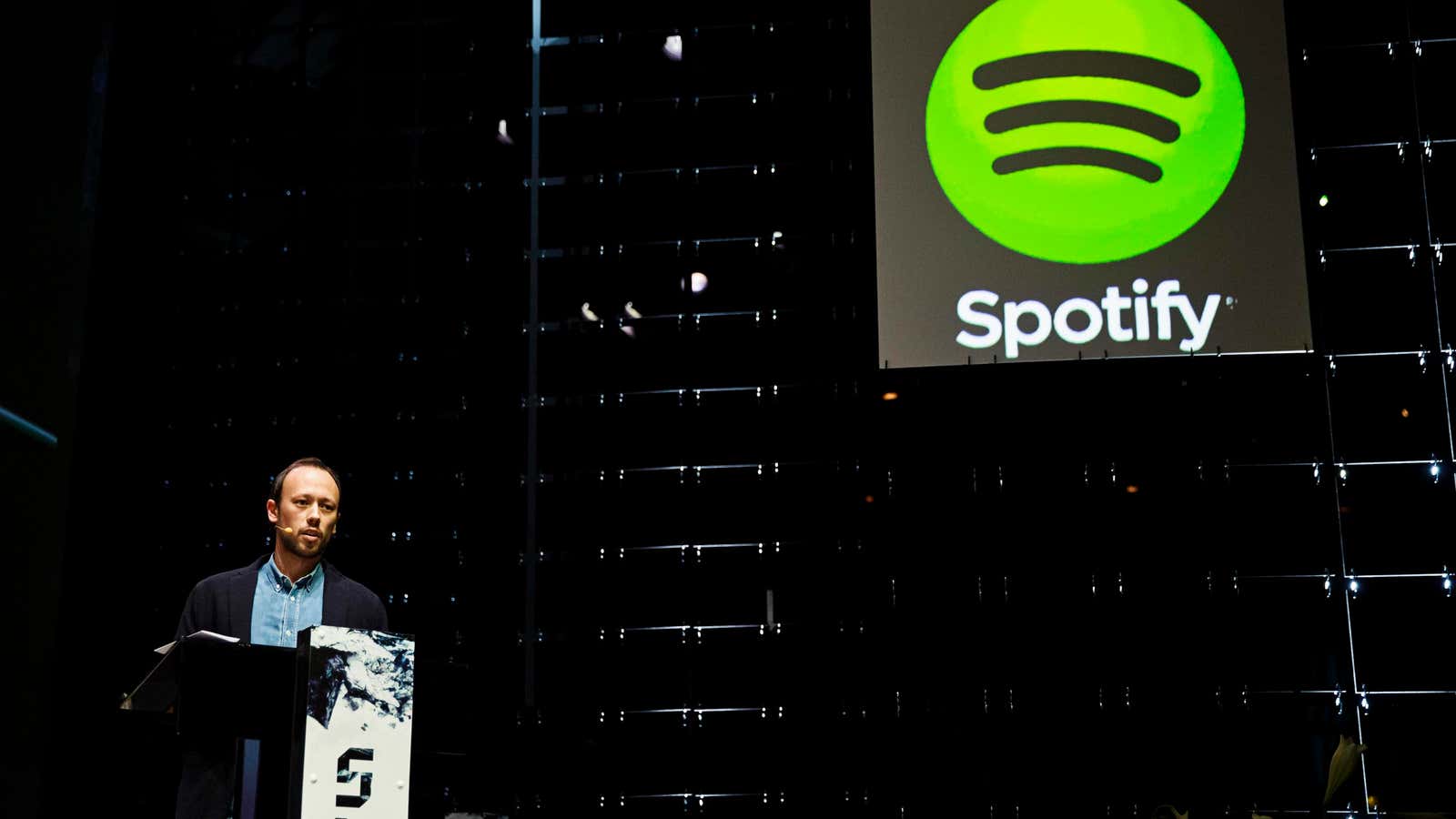Music-streaming service Spotify is ready to go big.
The tech company—the biggest in the music-streaming market, but held back by a somewhat shaky business model—today (Feb. 28) filed paperwork to go public, a development that industry experts have been speculating upon for years. Its prospectus, viewable on the SEC’s website here, suggests the share listing could raise as much as $1 billion.
But the fact that Spotify is finally making its move isn’t as interesting as how it’s doing it. Months ago, reports emerged that Spotify would eschew a traditional IPO in favor of a direct listing—forgoing the opportunity to raise more money, but avoiding the financial bumpiness and Wall Street fees of a regular IPO. The company’s filing today suggests it is going ahead with that unusual structure.
There are risks aplenty for investors. Spotify, which reported $4 billion in revenue in 2017 but a $1.4 billion loss, is still unprofitable, despite having 70 million paying subscribers—an unevenness that makes some industry experts balk. Other music-streaming companies, like Apple Music, meanwhile are gaining on Spotify, making its market share uncertain.
If Spotify’s direct listing is successful, it could be a huge windfall for founders and major shareholders Daniel Ek and Martin Lorentzon—and significantly shift the way that tech companies in the future decide to go public.
The 10-year-old Swedish company plans to trade on the New York Stock Exchange under the ticker “SPOT.”
